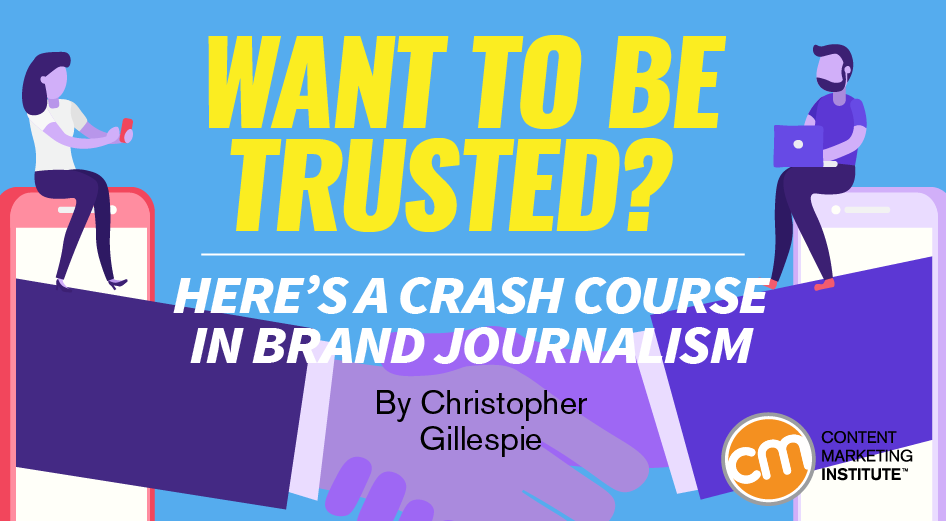Name your sources Cite all your sources. Include a statistic in a blog article? If you cite a study, tell the reader who conducted it and link to the primary source.” It takes only one lie or misstatement to break a reader’s trust. The article’s author discloses the Amazon connection (as The Washington Post does with all articles mentioning the CEO or his portfolio). (Disclosure: The author sometimes writes for Mixpanel but wasn’t involved in the article linked above.) Write for the reader The primary purpose of content is to interest readers. You’re on the wrong track if you choose topics without consulting customers and decline topics that don’t expressly mention the brand’s products. The latter is a blog sponsored by the parent company that lets its brand journalists write about whatever pleases readers. Sure, some companies use AI, but you don’t need to yet, right? Think like a journalist at Content Marketing World 2019 Sept. 3-6 in Cleveland, Ohio.

If your company wants to be seen as a media outlet, your brand journalism can’t be light on ethics, riddled with errors, and sopping with self-interest that suffocates readers.
Real journalism is about building an audience by telling true stories. “Your content needs to meet journalistic standards if you want it to be taken seriously,” says Iris Mansour, a journalist turned content strategist. “Brands that aren’t entirely honest or self-aware have a much harder time building audiences.”
Here are four ways your team – like real journalists – can earn readers’ trust.
Name your sources
Cite all your sources. Include a statistic in a blog article? Cite the source. Not including it suggests to readers that the author may have made it up.
Stand out and link to the primary source. Don’t link to a statistics roundup article, which points yet somewhere else. Follow the trail to vet the stat and you’re likely to find, it’s:
- Misquoted or misinterpreted
- Created by a source lacking credibility
- A broken link
- Hopelessly out of date
And if you find that one of those negatives applies, forgo using the statistic.
Sources say a lot about your brand. Accurately linked, high-quality sources say, “We can be trusted.” Omitted or incomplete sources suggest a company agenda and an organization that can’t be bothered with facts.
“Always tell your readers where your information is coming from,” says Monique El-Faizy, a freelance journalist who has written for The New York Times, The Guardian, and The Washington Post. “That both allows them to determine if they think a source is credible and to delve deeper into a topic should they choose. If you cite a study, tell the reader who conducted it and link to the primary source.”
It takes only one lie or misstatement to break a reader’s trust. Because brands rarely get feedback from readers, they can spread misinformation for decades and not know it. Have you heard this statistic, “A 5% increase in retention can boost profits 75%” from Bain & Company. It’s been frequently quoted since the study was conducted … in 1990. The Soviet Union was still around then. Google wasn’t. It’s fair to say the world has changed. And the stat was bad when first cited in 1990. It’s based on a sample size of one – a credit card company that no longer exists.
Cite a statistic like that to support an argument in an unrelated industry and you’re broadcasting, “We picked the first thing we saw on Google because it confirmed our pre-existing notion.” That’s not a good look for brands that want to be trusted.
Be objective
The difference between mainstream media publications and most business blogs is that the former openly strive for objectivity in their articles (and their points of view are reserved for their opinion pages). When newspapers have a conflict of interest, they state it. That may seem counterintuitive to the purpose of brand journalism, like ratting on yourself, but readers already know you’re biased in favor of your company. The only thing you can choose is how honest (or dishonest) you want to be seen.
Just look…

COMMENTS